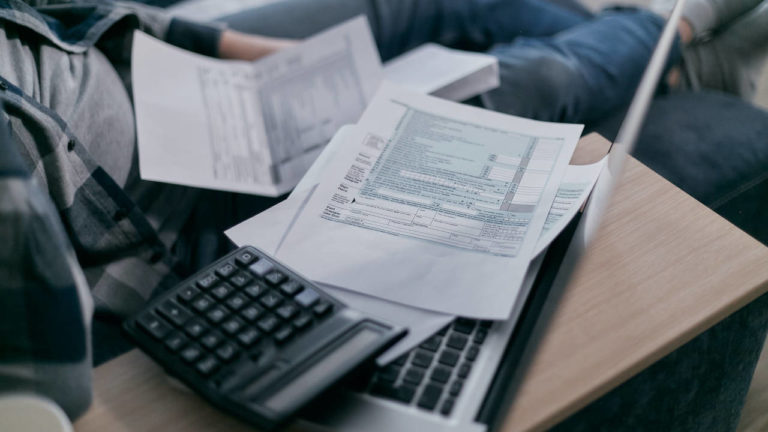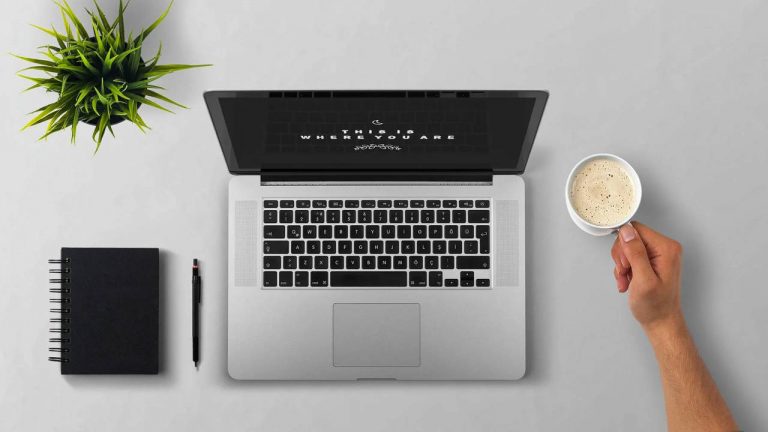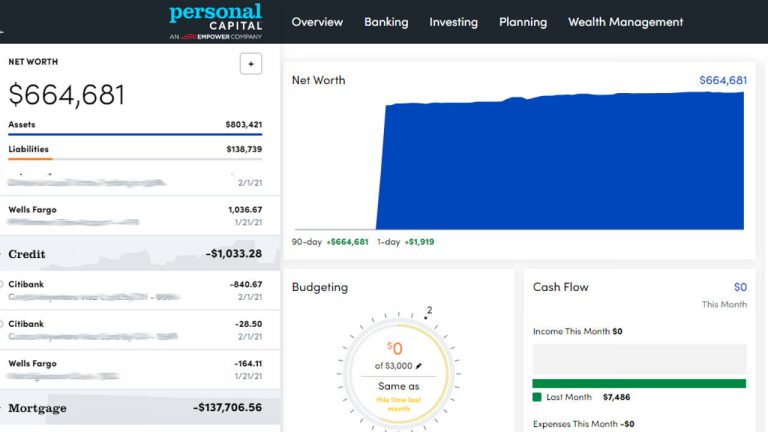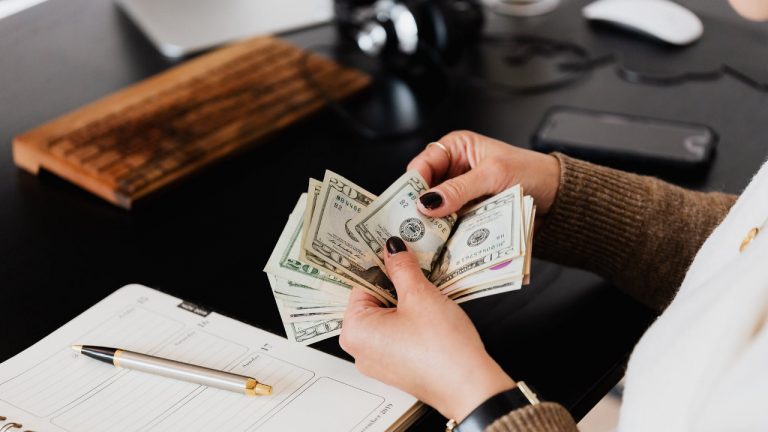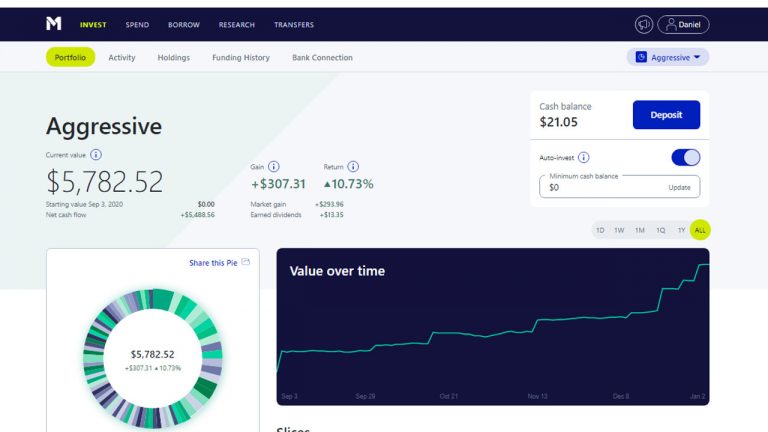After we got married, Jane and I knew we wanted to purchase a house to settle our family. We lived in an apartment for a while but we really wanted a full house to call our own. I didn’t want to share walls with other neighbors and really wanted a yard with space to call my own.
Plus, it’s much harder to convince your wife to get a puppy if you don’t have a yard.
We knew we wanted to be property owners for reasons other than purely financial. We also liked the idea of building equity and potentially being able to sell for higher than we bought the house.
While buying a house was the right thing for our family, there could be a financial case for some people to just rent. When you are considering whether to buy or rent, think through all the costs, both financial and otherwise.
Creating a Mortgage Budget
Once we decided we were ready to buy a house, we got preapproved for a mortgage. The next step was to start to think about our budget. We quickly realized that we would not be comfortable buying a house for the full amount that we were preapproved for.
The bank originally said that we could purchase a house for up to $450,000, based off our current income and debt. A 30 year mortgage at 4.25% would cost $2,214 per month. And that is before insurance, PMI, taxes, and other expenses.
For us, we knew that was too high and would leave us exposed to not being able to save enough money to do anything else.
If we took out a $300,000 mortgage at the same interest rate, that payment would drop to $1,476 per month. That seemed a lot more doable and would give us some extra wiggle room for other expenses.
Living in New York, the house prices and taxes are generally more expensive than other parts of the country. As we started our search, we knew it would be difficult to find the type of house we wanted in our price range. We were willing to pay a little extra for the right house but did want to cap it at $325,0000.
Finding Our House
We signed up with a real estate agent that a friend recommended and started our house search. For a few months, we scoured the state looking for houses that fit our basic criteria, which were:
- $325,000 or less, hoping we could negotiate the price down
- Within an hour of my job and 45 minutes to Jane’s. We didn’t want to be driving a ton, but also knew we might have to compromise.
- 3 bedrooms, to allow for kids or an office
- 2.5 bathrooms
- 1800+ square feet to allow for enough room for activities
- Preferably have an acre of land to have some privacy
- Move-in ready, not needing a ton of work to be liveable
As it turned out, we found our house without the real estate agent thanks to Trulia and Zillow. A few months later, we closed and moved into our new home. It was the day before Thanksgiving, 2013.
The house we found ended up being in the suburbs of a larger city. This helped to lower the price relative to size of the property we received. It checked almost every box we had, being listed for $315,000, was brand new construction. It was 2,000 square feet, 3 bed/2.5 baths, and in a good location for commuting.
The two areas we compromised on were the school system and the size of the land. Since we knew kids would be a few years off, we felt comfortable with not having the best school district for now. The lot size was 0.3 acres and ended up being the perfect size for us. Even though it wasn’t as large as I once wanted, it had plenty of privacy and space for dogs to run around.
Mortgage Costs
The house we settled on was listed for $315,000, which fit within our budget. Since it was new construction, there were a few pieces that we wanted to make it our own. We upgraded to granite countertops in the bathrooms, switched out some flooring, and had the driveway paved. Even with all of those changes, we were able to negotiate the overall price down to $310,000.
With where we were in our life at the time, we could only afford the minimum 5% down payment instead of the standard 20%. This meant we only needed a $15,500 down payment but there would be a PMI cost of $1,600 per year. While it was another cost we had to pay, it was the only way we could have afforded a house at the time.
Based on our small down payment, we took out a $295,000, 30-year mortgage at an interest rate of 4.25%.
In addition to the down payment, there were about $10,000 in closing costs, legal fees, and an appraisal. We did have enough cash savings to be able to pay for this.
Over that first year, we spent an extra $11,000 to get the house furnished. This included new furniture, appliances, and some landscaping. One of the biggest costs was $3,700 to get several dead trees cut down from the yard to prevent them from landing on the house during the next bad storm.
This is a good example of how there can be hidden costs with purchasing a house, even if it is brand new. Older homes can need renovation and emergency repairs on top of any new furniture and appliances that are needed.
Setting Our Mortgage Goals
I’ll be honest about our initial mortgage goals. For those first few years, it was simply to pay the minimum amount due for the mortgage. It was difficult to juggle all of our bills and debt on our income right out of college.
Our financial goal was to pay off our student loans and then our car loans first. The mortgage was our lowest priority at the time and we didn’t have enough money to put anything extra towards it.
Over time, we were able to pay off our other debts and our income grew. That gave us the ability to start to pay extra towards the mortgage. When that shift happened, we made the decision to start putting extra towards the house.
Originally, the goal was to just reduce our interest payments and length of the mortgage payments by paying a little extra. It wasn’t much, but I would round up the monthly payments to next $100. That turned out to be an extra $34.75 per month.
At that rate, it would have taken 13.5 months off the total life of the 30 year mortgage. It also would have saved $9,600 in interest payments. Not bad for a few extra dollars per month!
To Invest or Pay Down a Mortgage?
Seeing those numbers, we started to get excited about the opportunity to save even more. It was at that point that we decided that we wanted to pay off the mortgage as quickly as possible. Not only was it a guaranteed rate of return of 4.25%, but it would allow us to become financially free from debt.
Especially in a volatile stock market that could drop into a recession, paying off a mortgage could be one of the safest ways to see a return on your money.
Sure, most financial advisors will say that it makes more sense to invest that money in stocks that could make 8%+ in interest. In the long run, those people will probably make more money. However, we are looking to be free from debt and not have to worry about owing other people money.
Once our mortgage it paid off, we will immediately have in increase in monthly cash flow. As long as we pay our taxes and insurance, we won’t need to worry about not having a place to live. And, the faster we pay it down, the more interest we will save and the more we will be able to invest later on.
If you’re trying to determine how much to pay towards a mortgage, I would actually recommend splitting any extra money you have. The first goal should be to create an emergency savings fund, but then the rest can be split between a mortgage and investments.
Paying Off Our Mortgage
For the first three years we were in our house, we paid the bare minimum required for the monthly mortgage. After that, we started to round up the monthly payments and throw in any extra money we had available.
At the time of writing, we have $148,982 left on the mortgage after exactly 7 years. If we pay no extra principle from here on out, we would be done in 10 years and 6 months. Overall, our extra payments has saved us 13 years of our mortgage along with $115,000 in avoided interest payments.
However, we are working to continue to pay off extra principle at a rate that will allow us to be done within 3 years and save over $140,000 in interest.
Here is a look at how our extra principle payments have decreased our outstanding principle.

Here is a look at how much extra principle we paid to get to this point.
| Year | Extra Principle | Balance | Change |
|---|---|---|---|
| 1 | $0 | $292,351 | |
| 2 | $0 | $287,094 | -$5,257 |
| 3 | $0 | $279,861 | -$7,233 |
| 4 | $1,540 | $272,459 | -$7,402 |
| 5 | $18,530 | $246,815 | -$25,644 |
| 6 | $26,997 | $212,775 | -$34,040 |
| 7 | $53,554 | $148,982 | -$63,793 |
Tips for Paying Off a Mortgage Faster
Here are a few ideas to help pay off a mortgage (or other loan) faster and allow you reach financial freedom.
Pay Extra Principle
Make sure you’re contributing as much extra as you can each month. Even if it is only $20 or $30, it will add up and help to reduce your loan. For a mortgage, choose the option to pay extra principle instead of paying ahead. This will help to reduce the overall loan outstanding but won’t give you extra time to make next month’s payment.
If paying off a mortgage is a priority, think about putting any unexpected windfalls towards it. If you get a tax refund, use that to pay off a larger chunk. Get some money from relatives for your birthday or a holiday? Consider investing it in your mortgage. Or, dedicate your side gig income to pay off the mortgage faster.
Pay Every Two Weeks
Consider paying on a biweekly (every 2 weeks) basis instead of a monthly or bimonthly basis. If you pay every two weeks, you will get 26 payments in per year instead of only 24 if you pay bimonthly. It may not seem like a huge difference at first, but paying an extra two payments per year can help to dramatically reduce your mortgage.
For example, I usually pay $3,000 the first week, which rounds up the required monthly payment by $600. Two weeks later, I pay $1,000 in extra principle and keep alternating every pay cycle. Over the course of a year, I will pay an extra $4,000 towards the mortgage by doing this.
Avoid Private Mortgage Insurance (PMI)
Private mortgage insurance, or PMI, is a fee that is assessed on a home buyer if they don’t own at least 20% in equity. To avoid it, you’ll need to put down 20% when you buy the property. In our case, we had PMI until we paid down enough to reach 20% in equity. While we couldn’t avoid it with our first house, we absolutely plan to avoid that cost in all future properties that we purchase.
Don’t Wait
If at all possible, start to attack your mortgage early on. This may be hard for couples just starting out but could dramatically affect your overall loan. Paying an extra $1,000 on the first month will save $744 in interest when compared to paying the same amount 10 years later.
You Can Become Financially Free
Mortgage loans can be intimidating to pay off due to their sheer size. For most people, a mortgage is the largest debt that they will ever have. It can loom over your head and become a source of stress if you’re unable to meet the monthly minimum payments.
For us, we knew that we don’t want to be shackled to a home loan for any longer than we have to. By aggressively paying it down, we’ll be able to avoid hundreds of thousands of dollars in interest and shorten the term to only 10 years. You can use some of these ideas to improve your own loans and better position yourself for financial independence.








